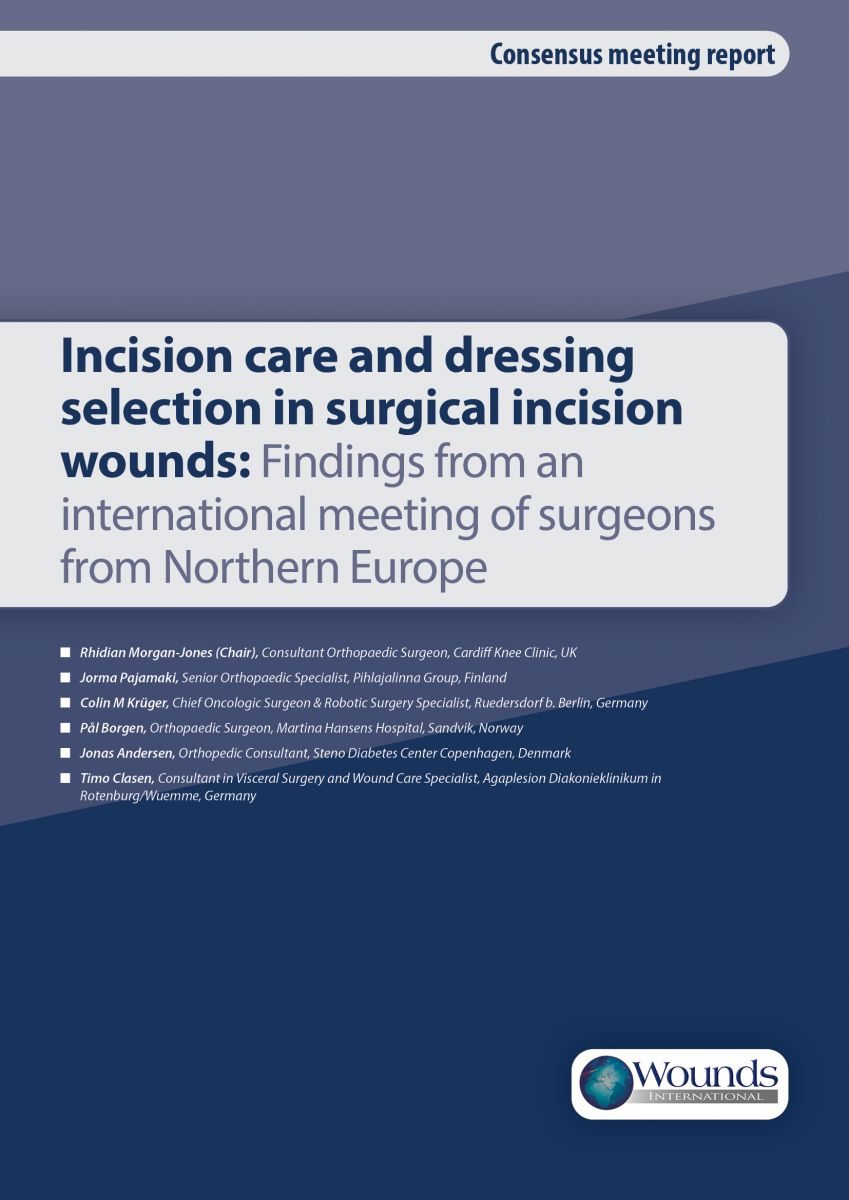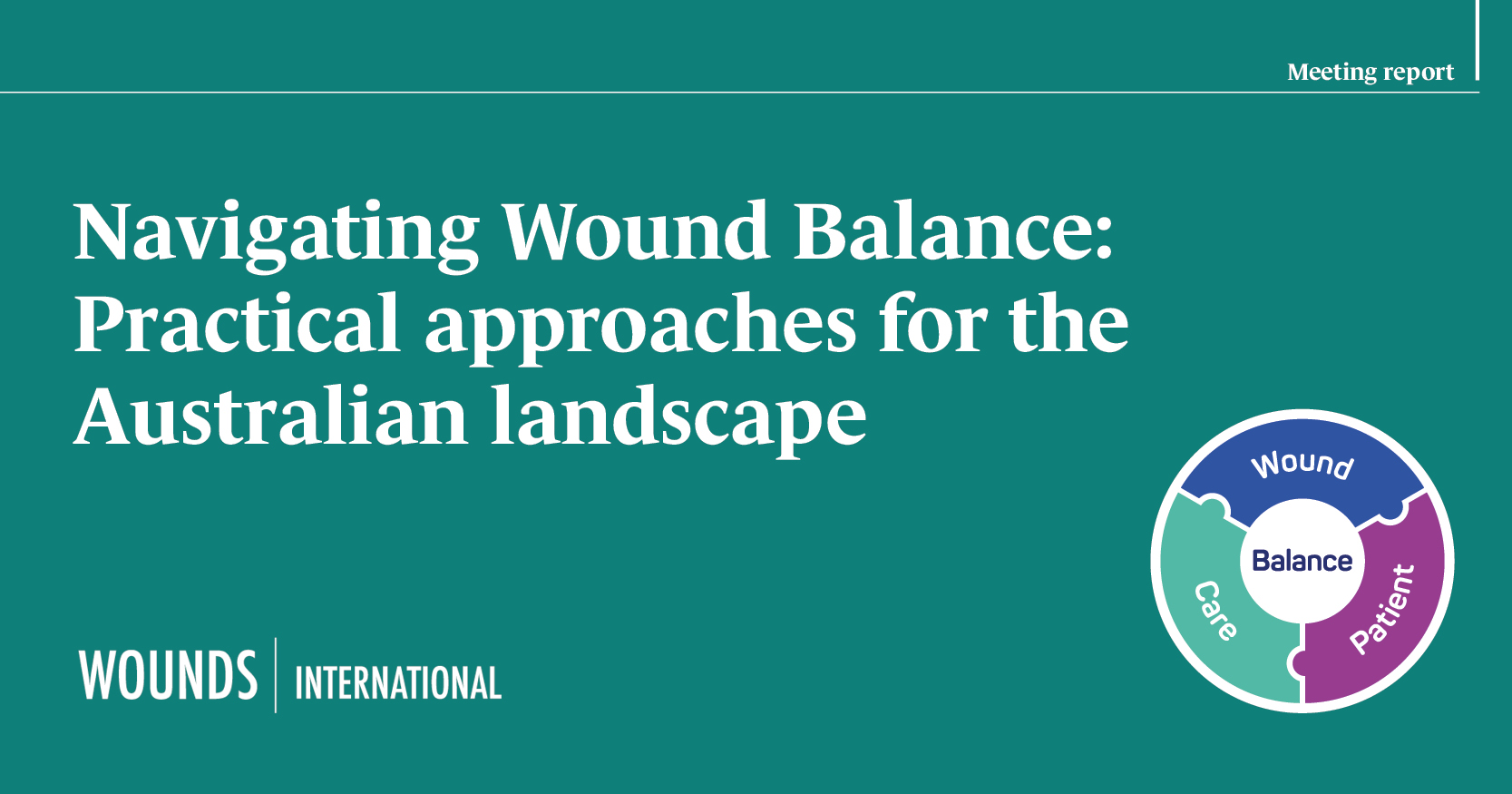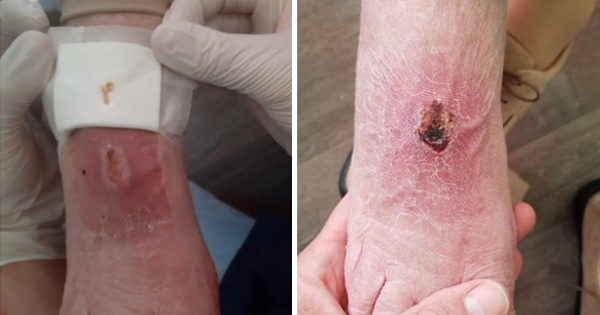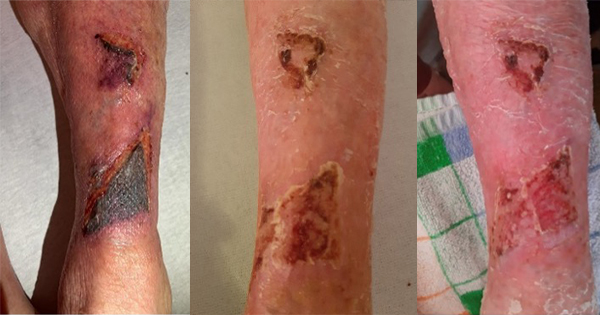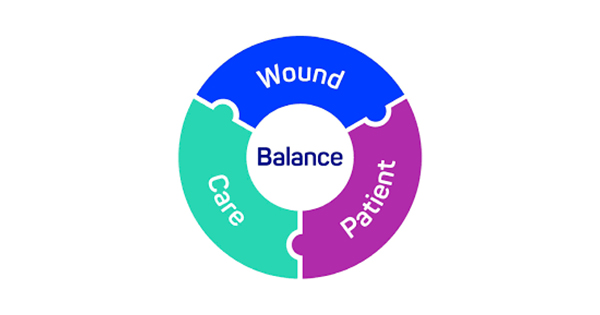Post-surgical incision care must be optimised, particularly in terms of reducing the risk of infection and associated complications (Sandy-Hodgetts et al, 2017; 2018; Morgan-Jones et al, 2019). An international consensus meeting was conduct in 2019 to examine post-surgical care and dressing selection for surgical incisions closed with primary intention (Morgan-Jones et al, 2019). A group of surgeons from Germany, Denmark, Finland and Norway convened online to discuss the findings raised in the 2019 international report and how they fit with local practice with the following aims:
- To clarify local views on post-surgical care and dressing selection for surgical incisions closed with primary intention (not wounds left open for healing by secondary intention).
- To discuss and reach consensus on recommendations for local practice in key areas of optimisation for wound healing pre-, peri- and post-operatively.
- To discuss and agree on the seven properties of the ‘ideal’ dressing in managing post-surgical incisions (Morgan-Jones et al, 2019; Morgan-Jones et al, 2020).
Surgical wound complications (SWCs)
Dressing selection plays a key role in post-surgical incision care to protect the wound while healing and to avoid surgical wound complications (WUWHS, 2016). The term SWCs includes, but is not limited to, surgical wound dehiscence, surgical site infection (SSI), hypergranulation, peri-wound maceration, scarring and medical adhesive-related skin injury (MARSI; Box 1) (Sandy-Hodgetts et al, 2020).
SSIs are among the most common SWC and healthcare-associated infections (HAIs) globally (ECDC, 2016). In the USA, SSIs and Clostridium difficile infection (CDI) were estimated to be the most frequent HAIs (36.0% and 30.3%, respectively). The burden of SSIs in the EU/EEA was estimated at over half a million cases annually, based on data from the European Centre for Disease Prevention and Control (ECDC, 2013). Across Europe, the overall percentage of SSIs varies from 0.5% to 9.0% depending on the type of surgical procedure – e.g. abdominoplasty in people with obesity has an infection rate of over 30%, and complicated limb traumas requiring surgery have an infection rate of up 50% (ECDC, 2018).
In a review of the costs and financial impact of HAIs on the US healthcare system, the most costly HAIs were central line-associated bloodstream infections, ventilator-associated pneumonia, SSIs, CDIs and catheter-associated urinary tract infections. In total, the annual cost for the top five HAIs was $9.8 billion (95% CI, $8.3-$11.5 billion), of which SSIs contributed the most to overall costs (33.7%; Zimlichman et al, 2013).
SSIs are associated with longer post-operative hospital stays, may necessitate additional surgical procedures, may require intensive care, results in higher cost and higher attributable morbidity and mortality (Cassini et al, 2016). This is followed not only by higher hospital costs (Zimlichman et al, 2013) but also a negative impact on physical and mental health of the individual and a loss of productivity (Badia et al, 2017). Additionally, the rising incidence of antimicrobial resistance requires extensive consideration to ensure that antimicrobial stewardship strategies are in place to reduce to overuse of antimicrobials within post-operative incision management. Also, there is an increase in elderly individuals and individuals with complex comorbidities who require surgery, both of which are known to increase risk of SSIs (Kay et al, 2005; Xu et al, 2021).
Another challenge is ensuring consistency and standardisation. To help standardise care, it would be beneficial to train staff who are responsible for post-surgical wound care in wards, outpatient clinics and the primary care setting on when it is appropriate to change wound dressing. There is also an opportunity for further education among surgeons on the causes of SWCs and appropriate dressing choice. Increasingly, and especially driven by the COVID-19 pandemic, the digitalisation of care has helped to improve communication and raise awareness of post-incision care between outpatient staff and the surgical and wound care teams – e.g. sending photos of incision sites. This has helped to ensure consistent care is maintained once the person is discharged, to empower the community staff and to reduce unnecessary hospital admission as the surgical team can advise electronically.
Undisturbed wound healing
Many surgeons recommended keeping dressings in place for 7 days post-surgery, although this now varies according to national guidelines, local protocols and surgical specialty (Brindle and Farmer, 2019). The potential benefits of undisturbed wound healing (UWH) depend on the individual and their circumstances; however, in appropriate clinical situations, longer wear time can result in a range of benefits such as (Brindle and Farmer, 2019):
- Optimised healing if the wound remains undisturbed and is on a healing trajectory
- Reduced risk of contamination, potential infection and MARSIs
- Potential reduction in treatment cost and time.
There are, of course, cases when promoting UWH is not suitable; fluid leakage, strikethrough or dressing saturation are absolute reasons to change the wound dressing (Morgan-Jones et al, 2019). Potential indicators that dressing change is necessary (or preferred) include:
- Saturation of the wound dressing
- Dressing leakage
- Excessive bleeding
- Suspected local/systemic infection (e.g. local wound pain, redness, swelling)
- Potential dehiscence or wound edge deterioration
- Loss of adherence of the dressing (i.e. the dressing is peeling off).
Dressing wear time
The standard dressing wear time for surgical sites varied among the panel based on the surgery type, local protocol and clinician choice (Box 2). However, what remained constant was the importance of consistency and standardisation in care. Regardless of the specific protocol regarding dressing changes, it is vital that the protocol is followed by all staff and that it is individualised for the person at the centre of care.
Person-related factors
To reduce the risk of post-incisional complications, a holistic approach to optimise person-related risk factors at the pre-, peri- and post-operative stage is known to reduce the risk of SWCs (ERAS Society, 2016; WHO, 2016; WUWHS, 2018), for example:
- Pre-operative optimisation – including; assessment and management/optimisation of comorbidities (e.g. obesity, malnutrition, diabetes mellitus, chronic obstructive pulmonary disease, anaemia, cardiovascular disease, smoking and drug misuse); screening for Methicillin-resistant Staphylococcus aureus and vancomycin-resistant enterococci, showering or bathing on the day of surgery using plain or antimicrobial soap/cleanser; use of clippers (rather than a razor) for hair removal on the day prior to the procedure (Tanner et al, 2021).
- Intra-operative optimisation – including; maintenance of normothermia (i.e. avoidance of hypothermia, unless otherwise indicated); covering of the incision(s) with a dry absorbent sterile dressing under sterile conditions before the individual leaves the operating room.
- Post-operative optimisation – including; UWH for at least 48 hours unless there are signs and symptoms indicating earlier inspection is warranted; rapid mobilisation after surgery, especially for older individuals; prevention of a catabolic metabolism.
The individual, their wound and overall circumstances should also be taken into account prior to surgery to determine dressing selection.
Properties of the ‘ideal’ dressing
A wound care dressing should facilitate wound healing by creating an optimal wound healing environment. An international consensus previously agreed upon six key requirements of the ‘ideal’ dressing in managing post-surgical incision wounds (Morgan-Jones et al, 2020). A group of experts from the Asia-Pacific region agreed with these requirements with an additional requirement emphasising the importance of a dressing comfort and atraumatic removal of wound dressing (Morgan-Jones et al, 2020). The panel from Northern European regions added an eighth wound dressing requirement of ‘ease of use’ to ensure consistent care throughout the healing journey:
- Flexible (does not impede the person’s movement), providing elasticity to avoid pulling the skin or blistering (particularly over joints)
- Well-fixed to the skin on application once the skin is dry after being disinfected and remains adhered if there is sweating
- High absorption capability
- Protective of the surrounding skin to reduce the risk of blistering or irritation
- Waterproof to provide a good seal/barrier function and enable the individual to shower
- Eliminate dead space between the wound bed and wound dressing where necessary to avoid exudate pooling
- Provides comfort and is atraumatic on removal reducing the risk of compromising skin integrity
- Easy to use by all individuals and care staff to ensure consistent care.
Where required by the wound and individual’s circumstances, further specialist dressings may be required – e.g. using closed incision negative pressure wound therapy (ciNPWT) in wounds where heavy exudate/leakage may be an issue. In addition, inNPWT should be considered in cases where a high risk of SWC is suspected as a preventive measure (Norman et al, 2020).
Role of education to ensure consistent care
To ensure unified practice all staff should be trained, familiar and confident with the post-incisional care protocol in place and know when to alert or refer to a specialist (e.g. signs of infection, systemic deterioration). The group agreed that it remains a challenge to maintain consistency across the care setting and that the answer is education. This is especially important among trainee surgical staff who may not have encountered wound complications as wound management is often manged by medical experts in wound care centres. Opportunities for trainee surgeons to work alongside wound care specialist nurses should be provided and included in the training so that the surgeon understands how their dressing choice in the operating room affect post-surgical wound sites.
Conclusion
Although post-incisional care may vary across Germany and the Nordic region, the group agreed that consistent care and standardisation across care settings; individual optimisation pre-, peri- and post-surgery; education and training of staff; and access to the surgical team are vital to improving outcomes for people with incisional wounds. The group agreed that incision care is an area with specific dressing needs as outlined by the ‘ideal’ dressing requirements. During dressing selection, consideration needs to be given to the person, their wound and the individual circumstances.

